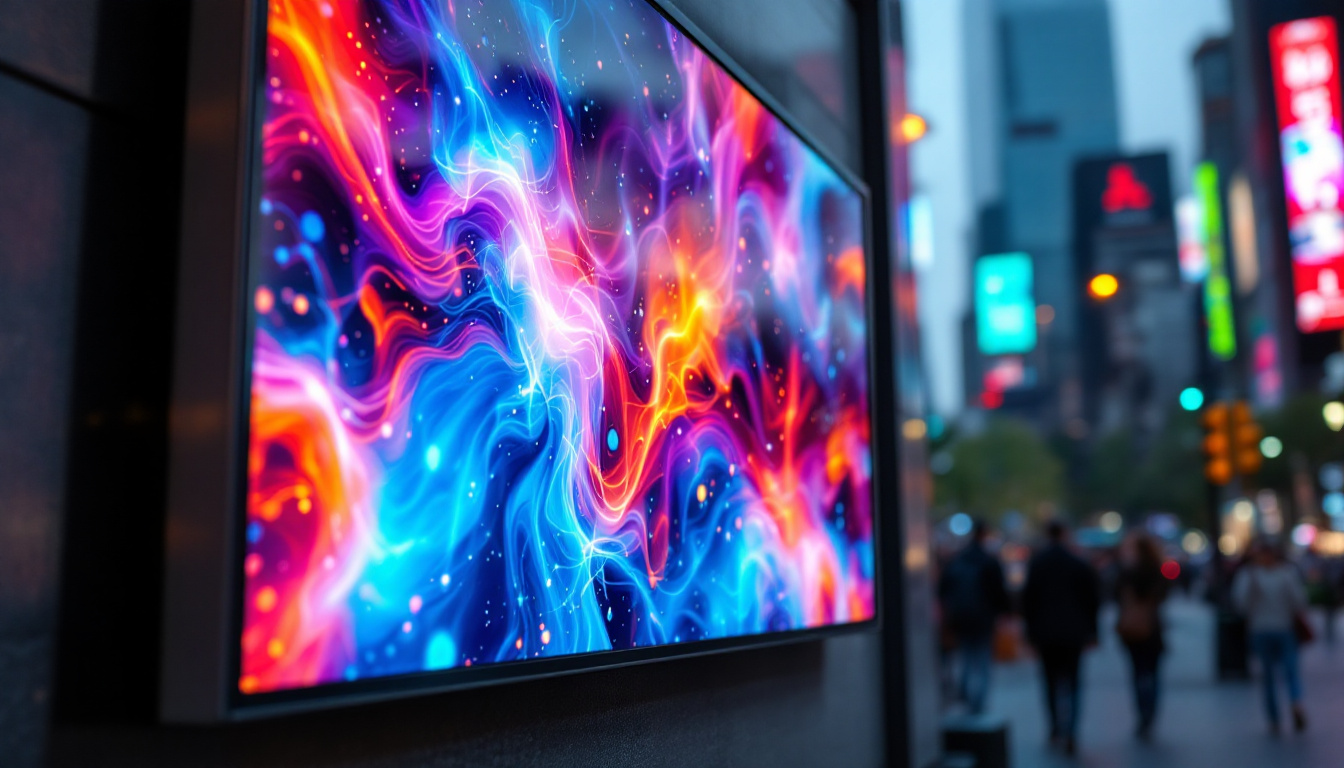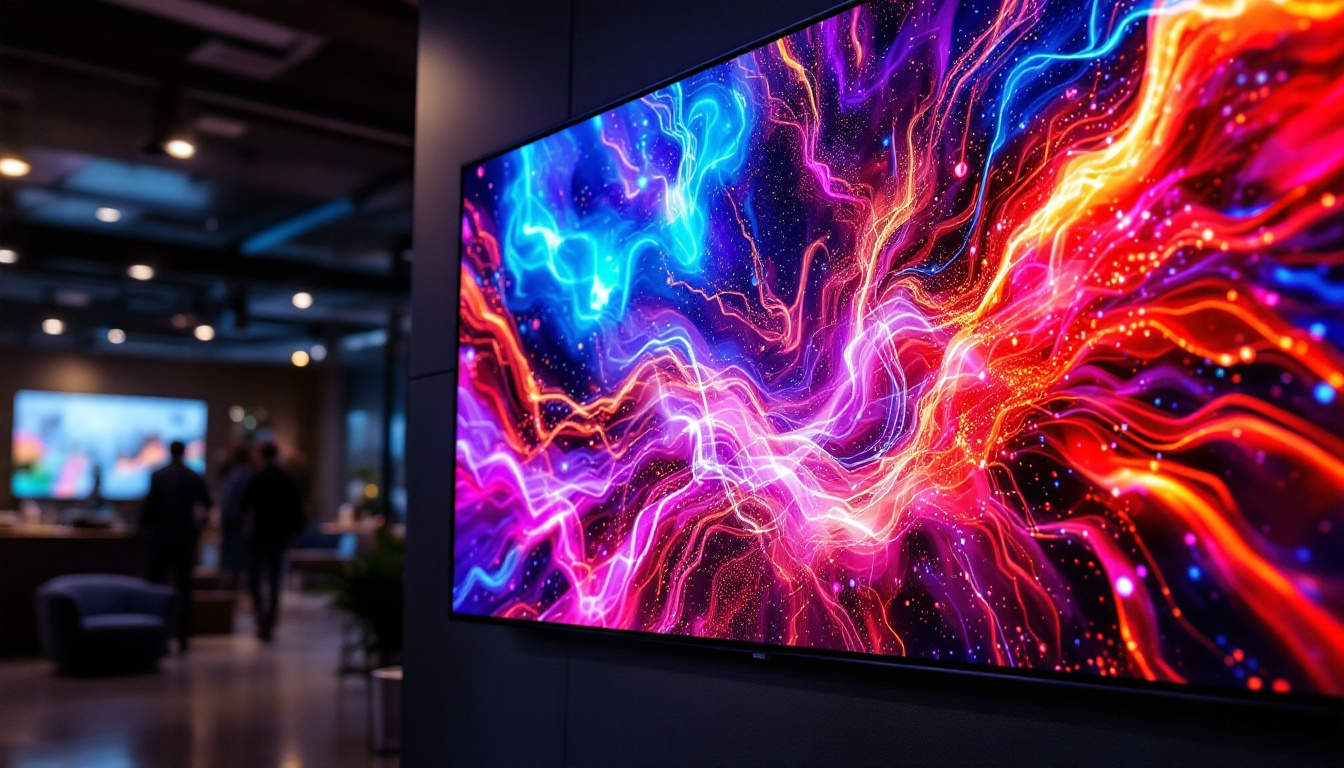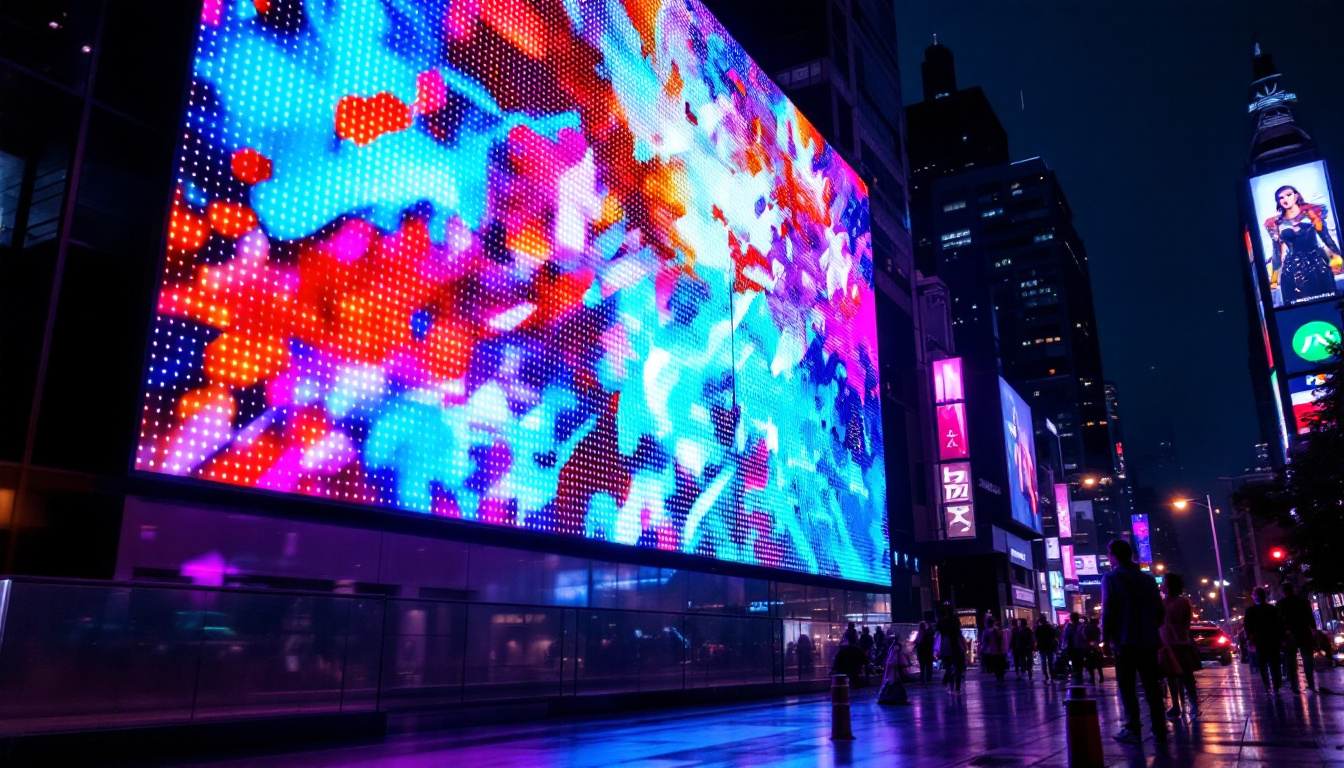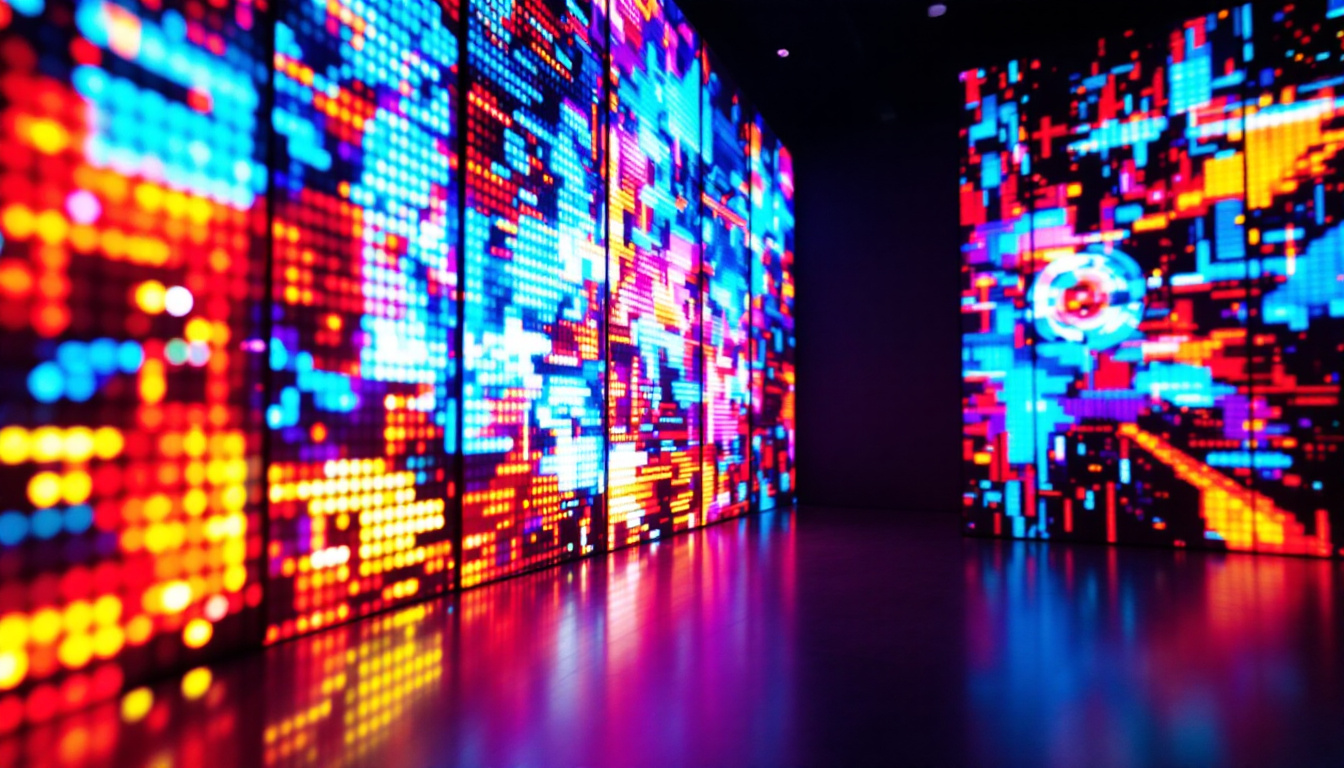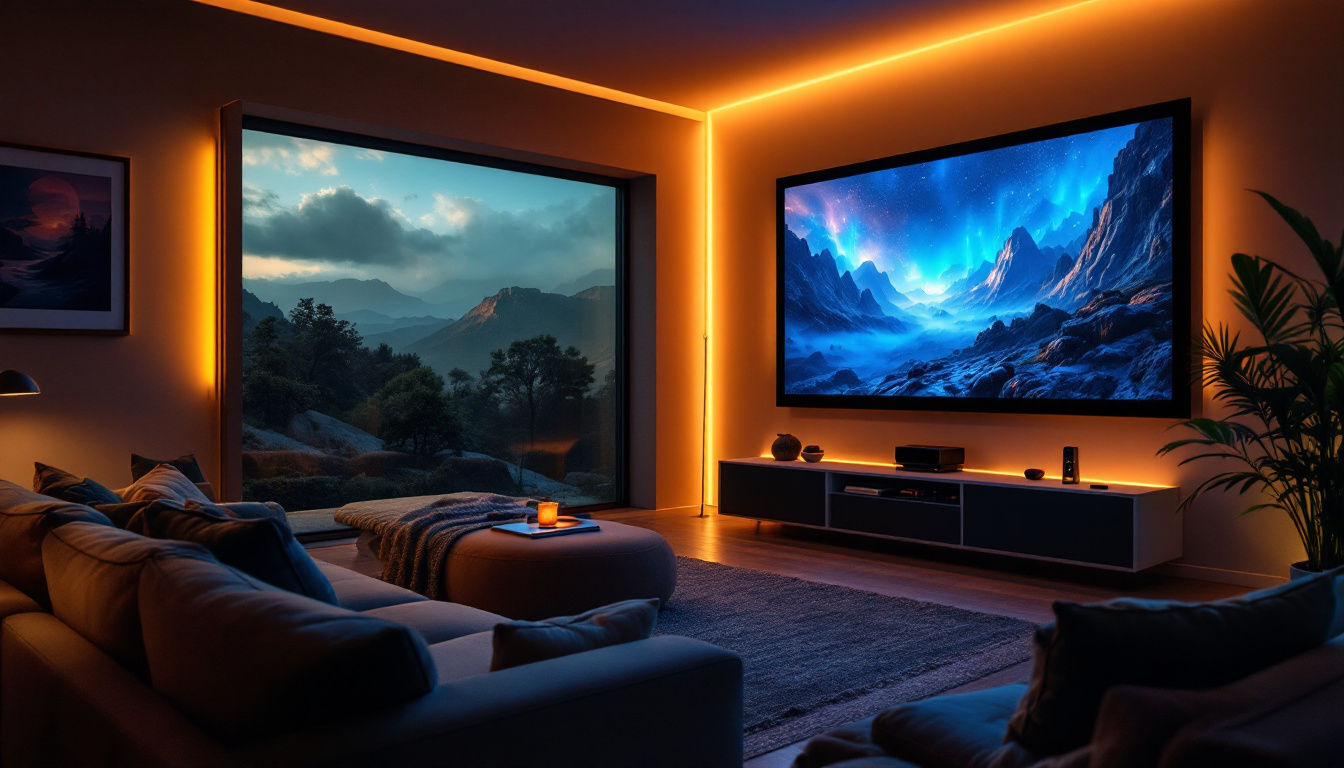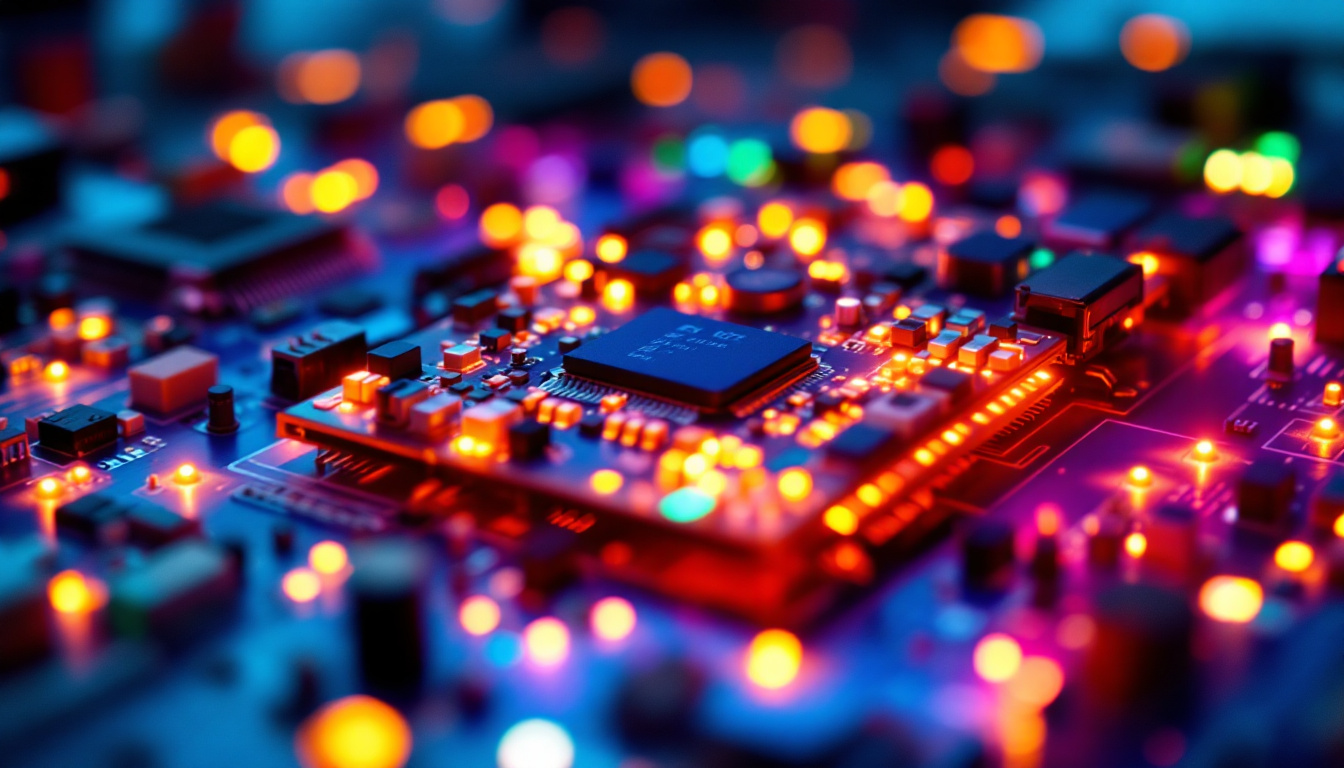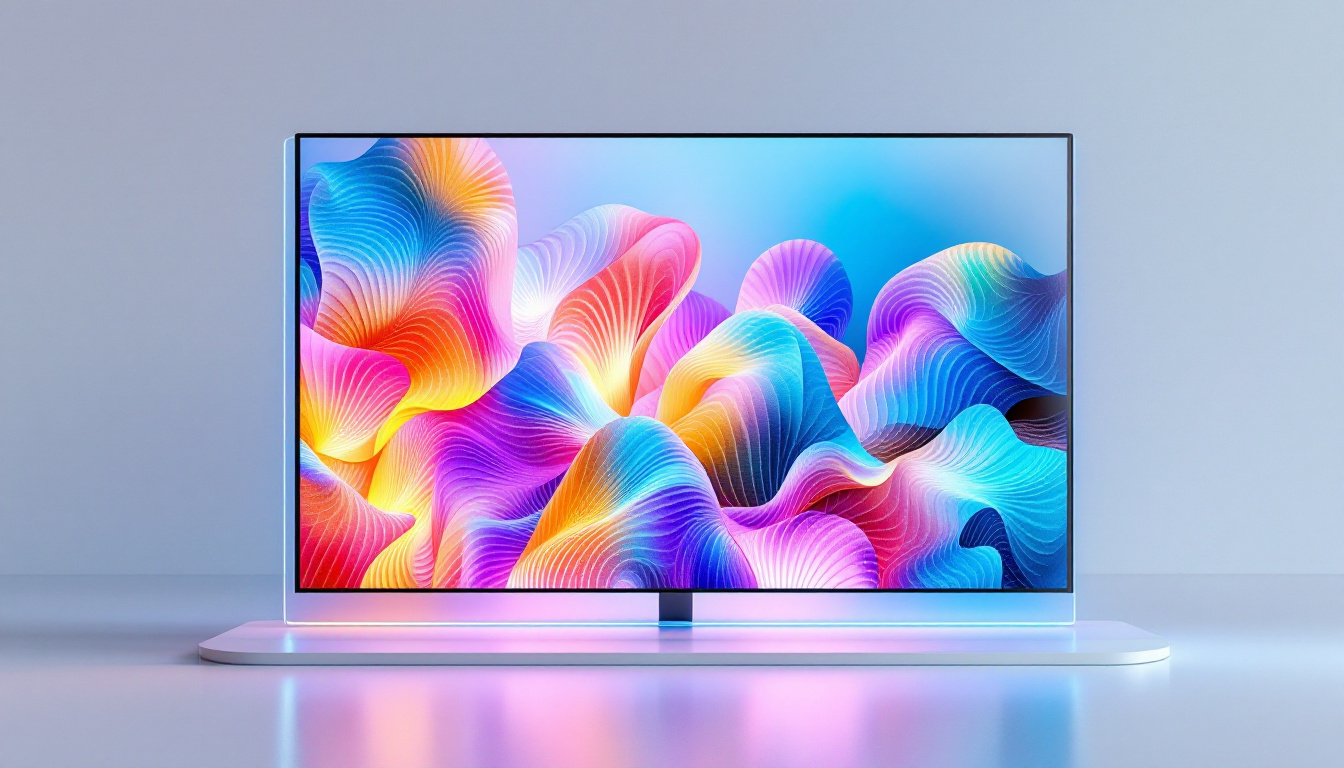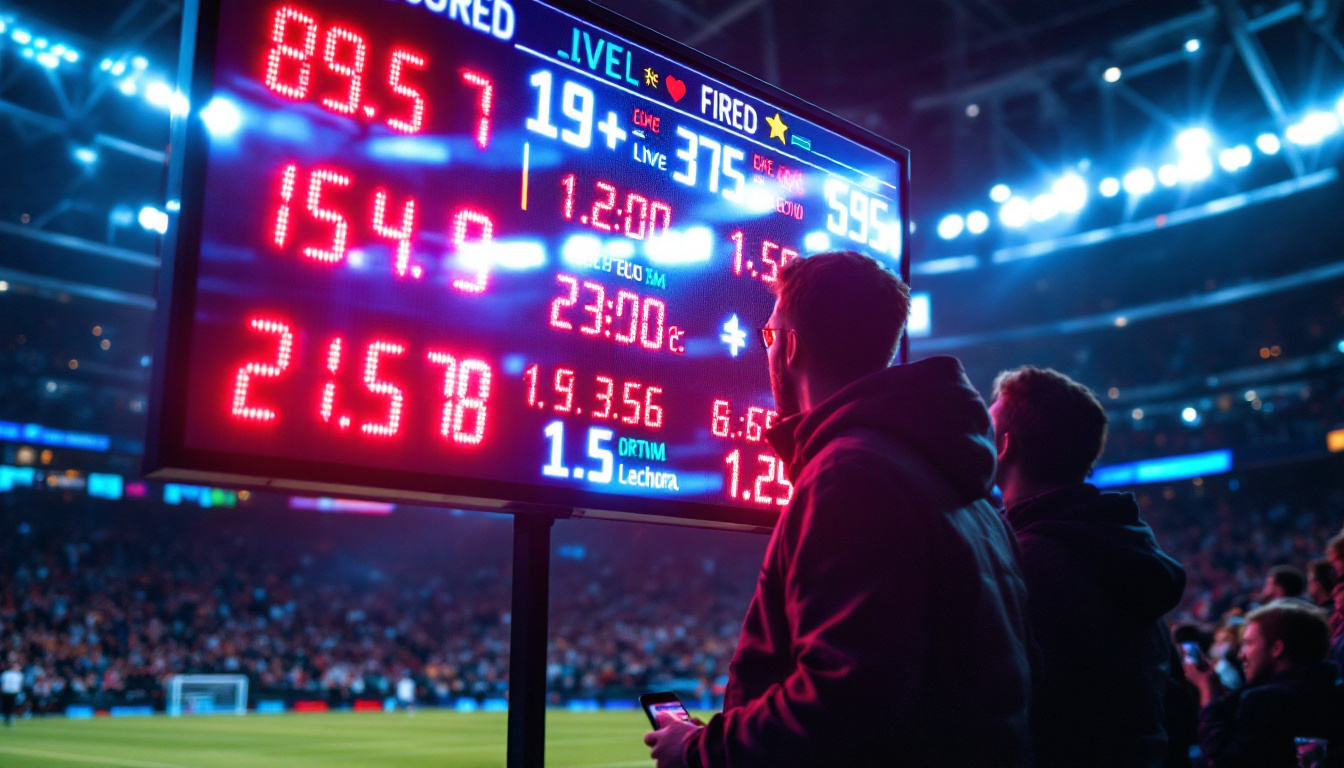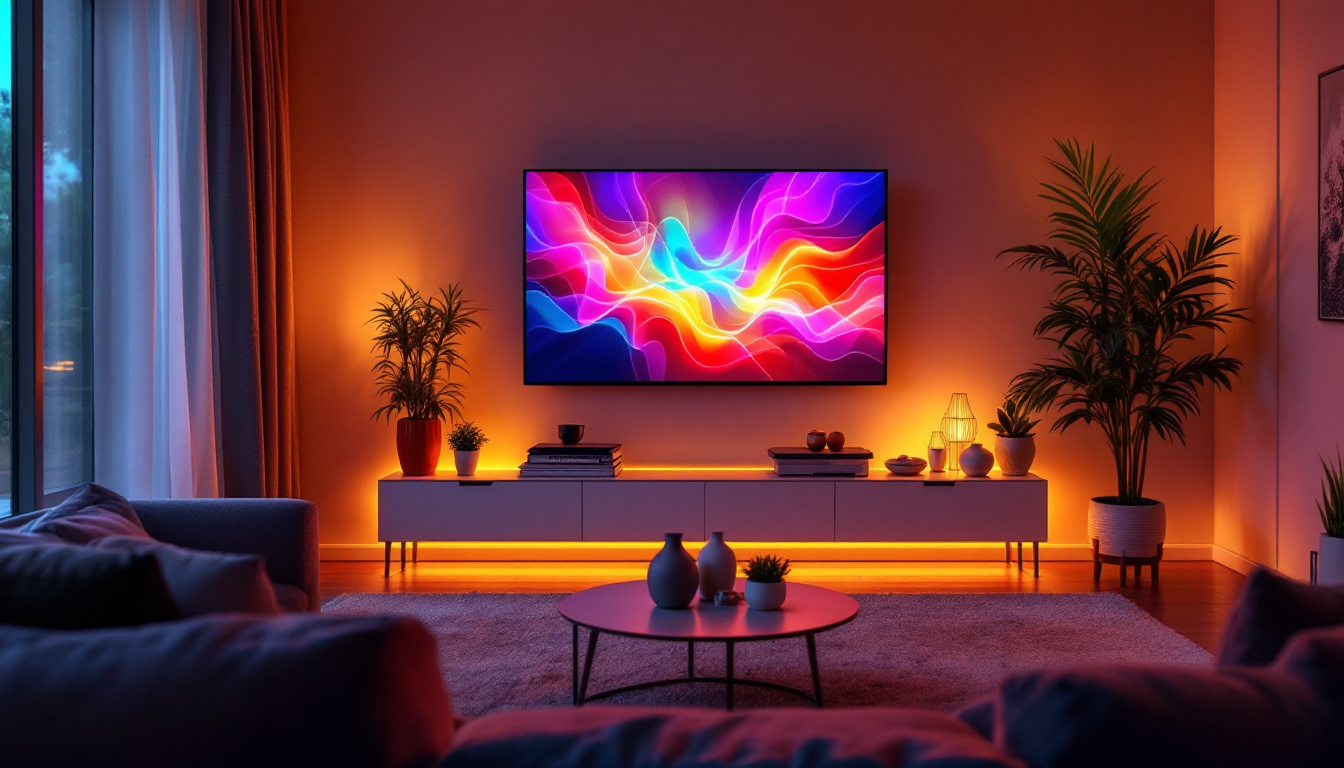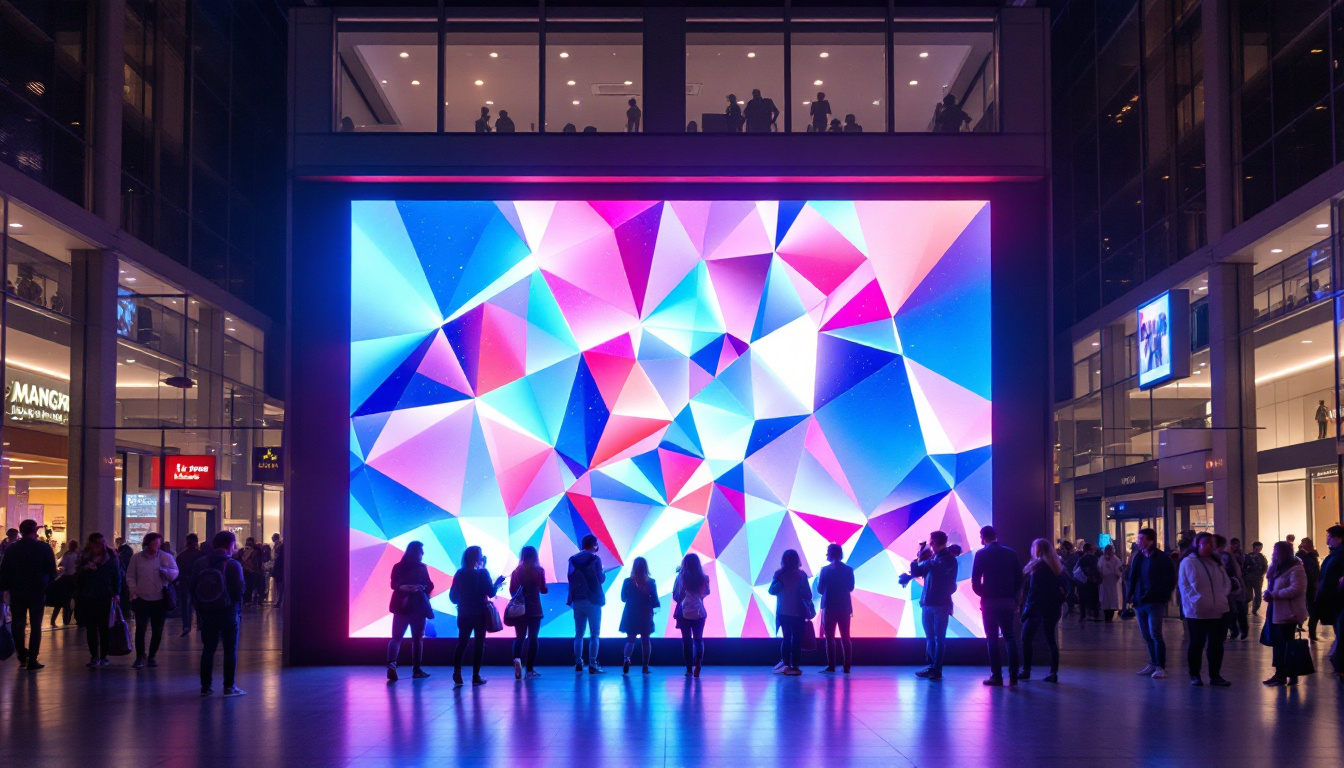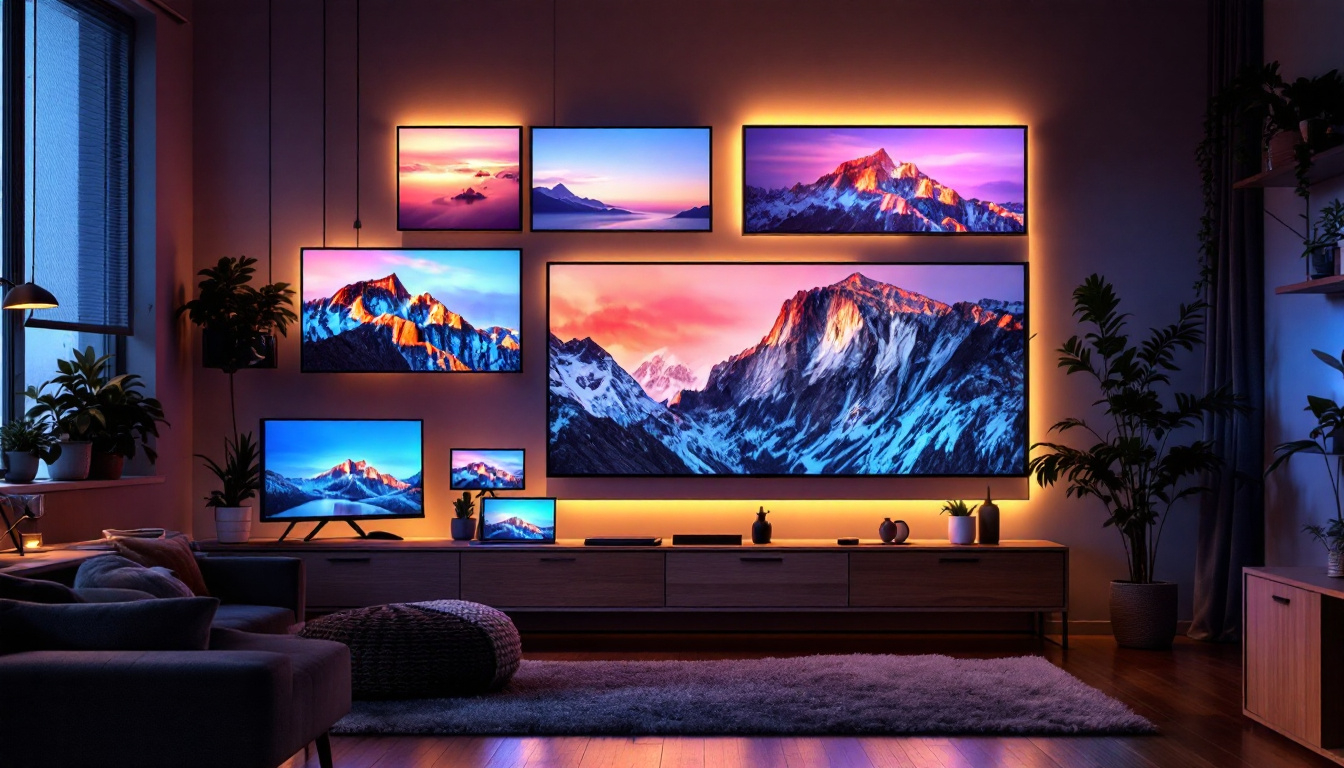In the realm of modern display technology, LCD (Liquid Crystal Display) and LED (Light Emitting Diode) have become ubiquitous. While many people use these terms interchangeably, understanding the nuances between them is essential for making informed decisions about technology. This article delves into the intricacies of LCD technology, particularly focusing on LED displays, and how they have transformed the visual experience across various devices.
Understanding LCD Technology
LCD technology is based on the manipulation of liquid crystals to produce images. These crystals do not emit light directly; instead, they rely on a backlight to illuminate the display. This technology has been pivotal in the development of screens for televisions, computer monitors, and mobile devices.
How LCD Works
The core of an LCD is its liquid crystal layer sandwiched between two polarizing filters. When an electric current passes through the liquid crystals, they align in such a way that allows varying amounts of light to pass through. This alignment creates the images we see on the screen.
However, the quality of the display is heavily dependent on the backlighting method used. Traditional LCDs utilize cold cathode fluorescent lamps (CCFLs), which can be bulky and less energy-efficient compared to newer technologies. In contrast, modern LCDs often employ LED (light-emitting diode) backlighting, which not only reduces the thickness of the display but also enhances brightness and contrast levels. This advancement has led to the development of various types of LED backlighting, including edge-lit and full-array, each offering different benefits in terms of image quality and energy consumption.
Advantages of LCD Technology
LCD technology offers several benefits, including thin profiles, lightweight designs, and energy efficiency. These attributes have made LCDs a popular choice for a wide range of applications, from televisions to smartphones.
Moreover, LCDs can produce sharp images with good color accuracy, making them suitable for both professional and personal use. The technology has evolved significantly, with improvements in resolution and refresh rates enhancing the overall viewing experience. Additionally, advancements such as In-Plane Switching (IPS) technology have improved viewing angles and color reproduction, making LCDs even more versatile. This is particularly beneficial for collaborative environments, where multiple viewers need to see the screen from different angles without significant color distortion.
Another noteworthy aspect of LCD technology is its adaptability to various environments. Manufacturers have developed specialized LCDs that can withstand extreme temperatures and harsh conditions, making them ideal for outdoor displays and industrial applications. This versatility has expanded the reach of LCD technology beyond consumer electronics, paving the way for its use in digital signage, automotive displays, and even medical imaging devices. As technology continues to advance, the potential applications for LCDs seem limitless, ensuring their relevance in an ever-evolving digital landscape.
What is LED Display Technology?
LED display technology is often referred to in conjunction with LCDs, but it is important to clarify that LED is not a separate display technology; rather, it is a type of backlighting used in LCD screens. LED displays utilize light-emitting diodes to illuminate the liquid crystals, offering several advantages over traditional CCFL backlighting.
Types of LED Backlighting
There are primarily two types of LED backlighting used in LCD displays: edge-lit and full-array. Edge-lit LED displays have LEDs positioned along the edges of the screen, allowing for a thinner profile. However, this design can result in uneven brightness and limited contrast ratios.
Full-array LED backlighting, on the other hand, employs a grid of LEDs behind the entire screen. This setup allows for better control of brightness and contrast, leading to improved picture quality. The ability to dim specific areas of the screen enhances the overall viewing experience, especially in scenes with high dynamic range.
Benefits of LED Displays
LED displays provide several advantages over traditional LCDs. They are generally more energy-efficient, which translates to lower electricity bills and a reduced environmental impact. Additionally, LED displays tend to have a longer lifespan, making them a more durable option for consumers.
Furthermore, LED technology allows for brighter screens with improved color accuracy. This enhancement is particularly beneficial for applications that require precise color reproduction, such as graphic design and video editing.
Moreover, the rapid advancements in LED technology have led to the development of OLED (Organic Light Emitting Diode) displays, which take the benefits of LED a step further. Unlike traditional LED displays that require a backlight, OLEDs emit their own light, resulting in deeper blacks and a wider color gamut. This has made OLEDs increasingly popular in high-end televisions and smartphones, where picture quality is paramount.
In addition to their visual benefits, LED displays are also becoming more versatile in terms of form factor. From ultra-thin screens that can be mounted on walls to flexible displays that can bend and curve, the possibilities are expanding. This adaptability opens up new avenues for creative applications in advertising, art installations, and even wearable technology, making LED displays an exciting area of innovation in the tech industry.
Comparing LCD and LED Displays
While both LCD and LED displays share the same fundamental technology, the differences in backlighting can significantly impact performance. Understanding these differences is crucial for consumers looking to invest in a new display.
Image Quality
Image quality is often the most significant factor when comparing LCD and LED displays. LED backlighting typically offers better contrast ratios and more vibrant colors due to its ability to control brightness at a granular level. This results in deeper blacks and more lifelike images, especially in dark scenes.
Moreover, the advancements in LED technology have led to the development of OLED (Organic Light Emitting Diode) displays, which provide even greater color accuracy and contrast. However, OLEDs come at a higher price point, making LED displays a more accessible option for many consumers.
In addition to contrast and color vibrancy, LED displays often incorporate features such as local dimming, which enhances the viewing experience by dynamically adjusting the backlight in different areas of the screen. This means that bright areas can shine brilliantly while dark areas remain deep and shadowy, further enhancing the overall image quality. As a result, viewers can enjoy a more immersive experience when watching movies or playing video games, where detail in both bright and dark scenes is crucial.
Energy Efficiency
Energy efficiency is another critical area where LED displays excel. The use of LEDs as a backlight consumes less power than traditional CCFLs, making LED displays a more sustainable choice. This efficiency not only benefits the environment but also results in lower operating costs for users.
As technology continues to evolve, manufacturers are focusing on creating displays that are both energy-efficient and high-performing, ensuring that consumers receive the best value for their investment. Furthermore, many modern LED displays come equipped with smart energy-saving features, such as automatic brightness adjustment based on ambient light conditions. This not only enhances user comfort but also contributes to significant energy savings over time, making LED displays an increasingly popular choice for eco-conscious consumers.
Additionally, the longevity of LED technology plays a vital role in its energy efficiency. LED displays typically have a longer lifespan than their LCD counterparts, which means fewer replacements and less electronic waste. This durability not only supports sustainable practices but also ensures that users can enjoy their displays for years without the need for frequent upgrades, further solidifying LED displays as a smart investment in the long run.
Applications of LCD and LED Displays
LCD and LED displays have found applications across a wide range of industries. From consumer electronics to professional settings, these technologies have become integral to modern communication and entertainment.
Consumer Electronics
In the consumer electronics sector, LCD and LED displays are prevalent in televisions, smartphones, tablets, and laptops. The demand for high-resolution displays has driven manufacturers to innovate continuously, resulting in products that offer stunning visuals and immersive experiences.
Smart TVs, for example, often utilize LED technology to provide users with access to streaming services, gaming, and other interactive content. The combination of high-definition visuals and smart capabilities has transformed the way people consume media.
Professional Use Cases
In professional environments, LCD and LED displays are essential tools for presentations, design work, and data visualization. Industries such as graphic design, video production, and architecture rely on the color accuracy and clarity provided by these displays.
Moreover, in sectors like healthcare, high-quality displays are crucial for accurately interpreting medical images and data. The ability to view intricate details can significantly impact patient care and outcomes.
The Future of Display Technology
As technology continues to advance, the future of LCD and LED displays looks promising. Innovations in display technology are paving the way for even more impressive visual experiences.
Emerging Technologies
New developments, such as MicroLED and mini-LED technologies, are gaining traction in the market. MicroLED displays consist of tiny, individual LEDs that can produce their own light, eliminating the need for backlighting altogether. This technology promises to deliver exceptional brightness, color accuracy, and energy efficiency.
Mini-LED, on the other hand, utilizes smaller LEDs for backlighting, allowing for more precise control over brightness and contrast. This technology is particularly appealing for high-end televisions and monitors, as it offers improved performance compared to traditional LED displays.
Integration with Smart Technology
The integration of display technology with smart devices is another trend shaping the future. As the Internet of Things (IoT) continues to expand, displays are becoming more interactive and connected. Smart displays can now provide real-time information, notifications, and even control over other connected devices.
This convergence of technology not only enhances user experience but also opens up new possibilities for applications in various fields, from home automation to education.
Conclusion
In conclusion, understanding the differences between LCD and LED display technologies is essential for making informed choices in today’s tech-driven world. While LCD technology serves as the foundation, LED backlighting has revolutionized the way images are displayed, offering improved quality, energy efficiency, and longevity.
As advancements continue to emerge, consumers can expect even more innovative solutions that enhance their viewing experiences. Whether for personal entertainment or professional use, the evolution of display technology promises to keep pushing the boundaries of what is possible.
With a myriad of options available, it is crucial to stay informed about the latest developments in display technology to ensure that the right choice is made, tailored to individual needs and preferences.
Discover LumenMatrix’s Innovative LED Display Solutions
As you consider the future of display technology for your personal or professional needs, explore the pioneering solutions offered by LumenMatrix. With our commitment to innovation in LED display technology, we provide an array of products designed to elevate your visual experience. From Indoor and Outdoor LED Wall Displays to specialized solutions like Vehicle LED Displays, LED Sports Displays, and even Custom LED Displays, LumenMatrix is at the forefront of creating displays that captivate and engage. Experience the transformative power of our LED display modules and take the first step towards revolutionizing your visual communication. Check out LumenMatrix LED Display Solutions today and see your brand in a new light.


